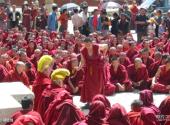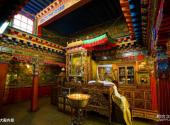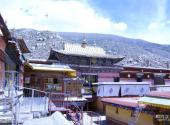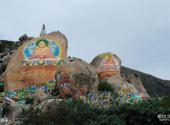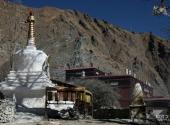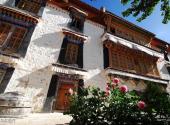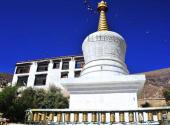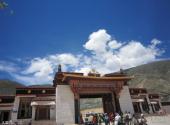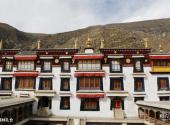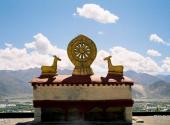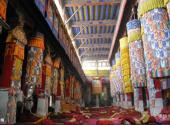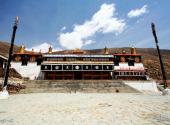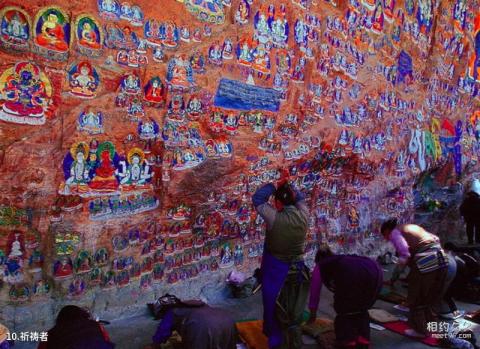
Scenic spot introduction:
Drepung Monastery in Lhasa, Tibet, is one of the six major temples of the Yellow Sect. It is located in the valley on the southern slope of Genpei Utse Mountain, about ten kilometers west of Lhasa. It was founded in 1416 by Jiangyang Quji-Zhaxi Bandan, a disciple of Tsongkhapa, the founder of the Yellow Sect. Before liberation, the monastery had more than 10,000 monks, 141 manors and more than 540 pastures, and was the largest temple of Tibetan Buddhism. The entire monastery is large in scale, with rows of white buildings covering the hillside. From a distance, it looks like a huge pile of rice, hence the name Drepung. "Drepung" is Tibetan, which literally means "snow-white rice piled high" and abbreviated as "rice pile", symbolizing prosperity. The full Tibetan name means "auspicious rice accumulation ten directions and victorious continent". It is the highest-ranking monastery in the Gelug Sect. In 1962, Drepung Monastery was listed as a key cultural relic protection unit in the Tibet Autonomous Region, and in 1982 it was listed as a key cultural relic protection unit in the country.Attractions distribution:
The temple has a construction area of about 200,000 square meters. From a distance, the buildings are stacked up in a row, shining with gold and white, magnificent and spectacular, just like a beautiful mountain city. There are six main scripture halls in the temple: 1. Ganden Phodrang 2. Cochin Hall 3. Tantric Court 4. Loseling Court 5. Guomang Court 6. Deyang Court. The main Buddha statues are: Maitreya Buddha, Vajra, and Immovable Buddha, as well as the golden Kangyur and the Battle of Buddha Mang, which have a long history and are unparalleled in the world, and countless various gold-plated Buddha statues, thangkas, Buddhist scriptures and other precious cultural relics. In addition, there are three Hinayana courts and one Tantric court among the four major monasteries in the temple. The three Hinayana courts all hold their own opinions based on the classics written by Tsongkhapa and his three disciples. The Luolin Court uses the classics of Panchen Soza, Guomang mainly studies the classics of Gongqin Jiangyang Xieba, and Deyang repairs the temple according to the classics of the Fifth Dalai Lama.Scenic spot features:
Photography, religious tours, templesTravel Notes of Travellers:
- Tiedan: Mission Operation 2010 (Part 2) ~ Travel Notes on the Sichuan-Tibet Line
- Tiedan: Mission Operation 2010 (Part 1) ~ Travel Notes on the Qinghai-Tibet Line
- Travel Guide: Lhasa Three-Day Free Travel Guide 2017
travelling guideline:
The Shoton Festival in midsummer every year is the best time to photograph Drepung Monastery. During this period, thousands of believers and friends gather at the Drepung Monastery.
Every hilltop and corner is filled with a festive atmosphere, which is much more grand than the Tibetan New Year.
On the first day of the festival, the whole mountain was crowded with people, creating a spectacular scene. Monks, believers, and tourists gathered to watch the sunbathing of the Buddha and
Tibetan opera performances, and leisure drinks in the woods.
Best time to visit:
March to October.
Shopping recommendations:
Specialties: Thangka, Tibetan knives, musk, saffron, Tibetan medicine, Nyingchi Tibetan incense, Tibetan carpets, Rhodiola rosea, folk wood carvings, masks, Tibetan wine,
Qamdo sour pears and Qiangmudu tea.
Food: dustpan cakes, in-laws cakes, mare's milk, milk wine, cheese, Tibetan beef and mutton, Lhasa sweet tea, Qiangmudu tea, steamed beef tongue, boiled
Intestines, liver, butter tea
Scenic spot location:
China > Tibet Autonomous Region > Lhasa > Chengguan District
How to get there:
Taxi: You can take a taxi from downtown Lhasa, the fare is 20 yuan to the foot of the mountain and 30 yuan to the top of the mountain.
Minibus: Take minibus No. 301 or 302 from downtown Lhasa to the foot of the mountain. Sometimes there are minibuses or trucks at the foot of the mountain to take passengers up the mountain.
1 yuan per person. If you walk up the mountain, it takes about half an hour.
Scenic area map:
Click to expand the scenic area map
Drepung Monastery Ticket Price:
The ticket price is 50 yuan, and Tibetans can enter for free.
Scenic area opening hours:
9:00-13:00 (most Buddhist temples are closed in the afternoon).

